Samsung Galaxy S24 hands-on: AI coming in clutch
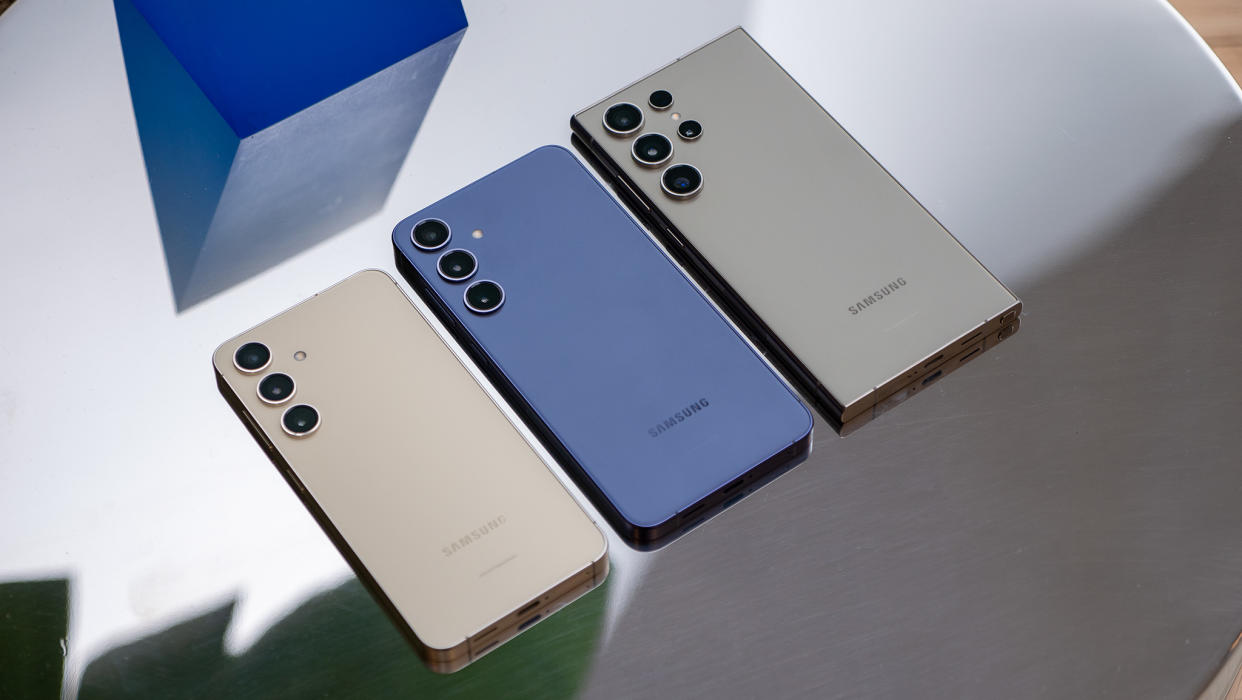
Samsung is back again with another big update to its most premium line of Galaxy S phones. The Galaxy S24 is official, and it comes in three models this year: the smaller Galaxy S24, the larger Galaxy S24 Plus, and the ultra-premium grade Galaxy S24 Ultra.
With these phones, Samsung is performing the usual spec bump in addition to a slew of new AI features. Everyone seems to be jumping on the AI bandwagon these days, but not all AI is created equal. With the Galaxy S24 family, Samsung is borrowing plenty of proven AI concepts from Google's Pixel 8 Pro, offering up a slew of useful new features that you're bound to love when you need them.
Hardware upgrades include a new flatter display on the Galaxy S24 Ultra, refined designs for the S24 and S24 Plus, and you'll even find better battery life and brighter screens for all models. Plus, Samsung is extending the software update promise to seven years, matching Google's Pixel 8 series with unparalleled long-term support.
I went hands-on with all three models at a special press event in New York City, and although the hardware upgrades are fairly minor this year, the new AI updates make these worthy upgrades for anyone with an older Samsung phone.
Samsung Galaxy S24: Price and availability
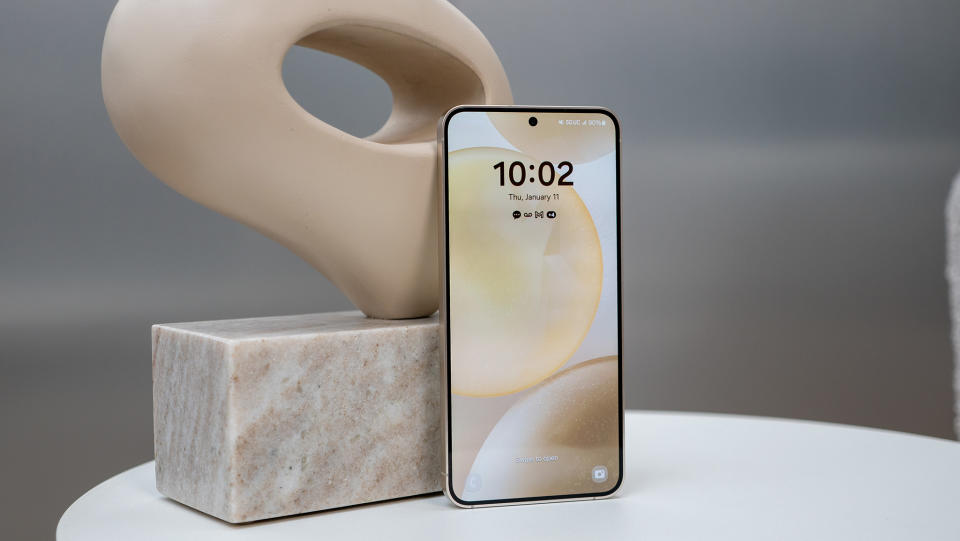
Samsung is offering three different models of its Galaxy S24 family of phones. The smaller Galaxy S24 features a 6.2-inch display and retails with 128GB of storage and 8GB RAM for $799. You can opt for an upgrade to 256GB for an increased price.
The Galaxy S24 Plus bumps the screen up to 6.7 inches and retails with 256GB of storage and 12GB of RAM for $999. You can upgrade the storage to 512GB for an increased price.
In addition, there are already plenty of Galaxy S24 deals to take advantage of, so you may end up paying much less for one.
Both the Galaxy S24 and Galaxy S24 Plus ship in Cobalt Violet, Amber Yellow, Marble Gray, and Onyx Black colorways at your favorite retail store. Buying one from Samsung.com will give you access to three additional colorways: Jade Green, Sandstone Orange, and Sapphire Blue.
All Galaxy S24 phones come with seven years of OS and security updates, a first for Samsung phones.
The Galaxy S24 Ultra features a 6.8-inch display, 256GB of storage, and 12GB of RAM for $1,299. Samsung is no longer offering the cheaper model with reduced RAM this year as it did with previous Ultra models, although you can upgrade to 512GB or 1TB of storage for an additional cost.
The Galaxy S24 Ultra ships in Titanium Grey, Titanium Black, Titanium Yellow, and Titanium Violet colorways at your favorite retailer or carrier. Buying from Samsung.com grants access to Titanium Orange, Titanium Blue, and Titanium Green colorways.
All Galaxy S24 phones come with seven years of OS and security updates, a first for Samsung phones.
Samsung Galaxy S24: Specs
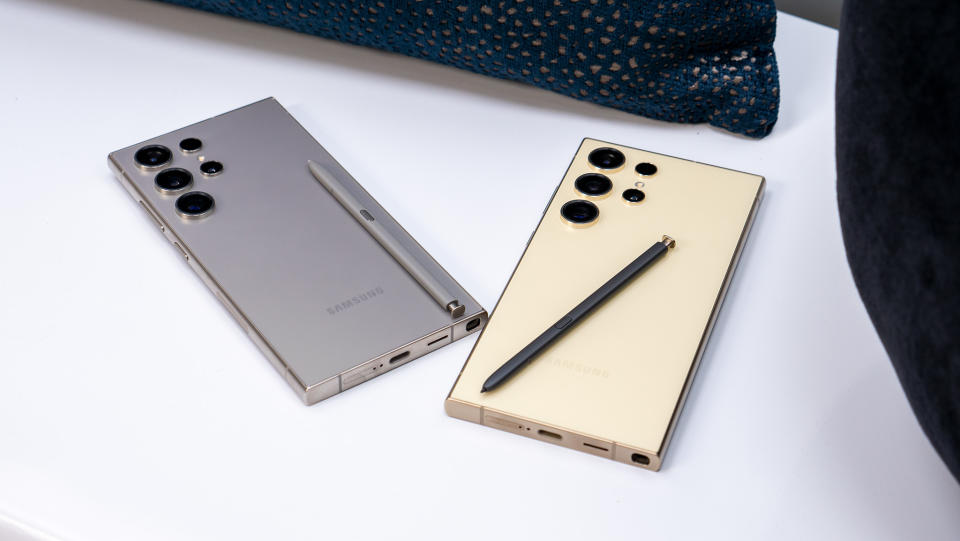
Samsung Galaxy S24: AI for all
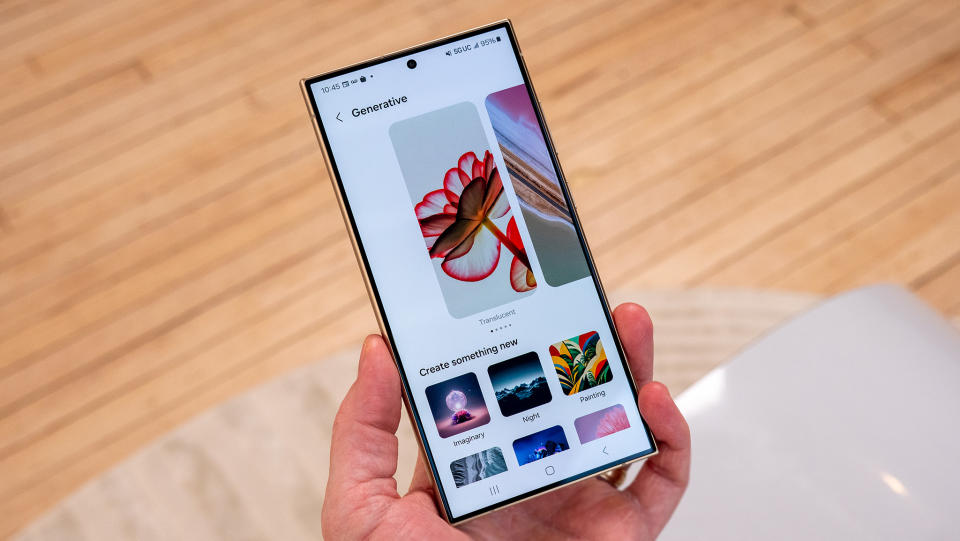
Before I delve into what makes these devices different, I'd like to cover what they share. Unlike Google, Samsung is offering all of its new AI features on all three Galaxy S24 models. Around a dozen new AI-powered features are debuting on the Galaxy S24 series and will all come to the Galaxy S23, S23 Plus, S23 Ultra, S23 FE, Galaxy Z Fold 5, Galaxy Z Flip 5, and Galaxy Tab S9 family this year.
Truth be told, most of these features are pretty niche. Translating a phone call isn't something you're likely to do every day, but Samsung's Live Translate certainly comes in clutch when you need the assistance. The same goes with most of the other new AI features coming to all three Galaxy S24 models, not just the biggest and most expensive one.
That's absolutely a dig at Google's Pixel 8 Pro strategy, which saw some of the best features appear only on the biggest of that company's most expensive model.
But, despite Qualcomm making a big deal about new on-device AI processing capabilities of the Snapdragon 8 Gen 3 that powers all three Galaxy S24 models (at least in North America), most of Samsung's new AI features require a cloud connection to work. In total, these three features are done entirely on-device and require no network connection:
Edit suggestions
Photo Ambient Wallpaper
Translation features (Calls, Interpreter, Messages)
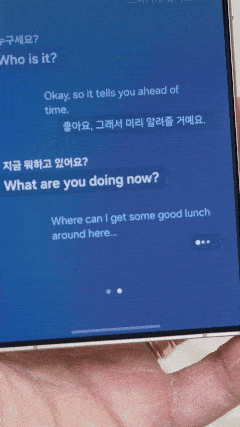
Samsung's suite of translation functions was very impressive when demoed at my hands-on session. I used all of the main functions — text translation, live phone call translation, and voice translation — and all seemed to work very well when translating between English, Spanish, and Korean. Thirteen languages are supported in total, and all are done on the device.
The GIF above is a clip of a live phone call translation demo running on a Galaxy S24 Ultra. I was speaking English, and the Samsung rep on the other end was speaking Korean. The person on each end only heard the machine-translated voice, not the human speaker's voice, which added a noticeable pause in the conversation but otherwise worked impressively well.
Of the eleven new AI features, eight require a cloud connection to work.
The remainder of the new functions all require network connectivity to function, and some even require a Google account to work. Effectively, anything that requires the use of generative AI will need a network connection and uploads data to the cloud.
As you might hope, Samsung says this data is private and is not saved after being processed. Here's a list of all the AI functions that require a cloud connection:
Auto Format
Circle to Search
Generate Cover
Generative Edit
Generative Wallpaper
Magic Compose Texting
Summary (Samsung Internet, Samsung Notes, Voice Recorder)
Writing Assist
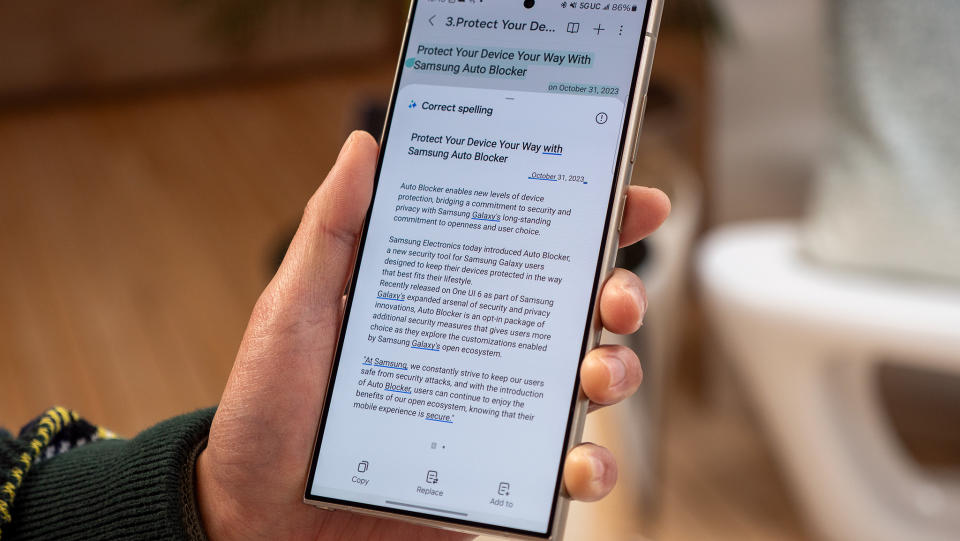
Many of the new AI features are using the same Google-powered backend that the Pixel 8 series uses. There's even a little Bard sparkle icon on features like spelling correction or summarization, as you can see in the image above.
You'll even need a Google account to use the Generative Wallpaper feature, which works identically to the Pixel 8's AI wallpaper feature. One of the new features shown off at the hands-on demo, Circle to Search, is also coming to other Android-powered phones soon. The Pixel 8 series gets it on January 31, with other phones to follow.

Circle to Search might be my new favorite feature, as it resurrects the old Now on Tap feature that Google killed a few years back. Google has been toying with updated versions of that feature for a while now, but this is the best implementation they could have possibly come up with.
You'll long-press on either the home button or the gesture bar, then circle anything on your screen you want to search for. It can be used with or without an S Pen, so it works on all Galaxy S24 models.
A new generative AI editing tool works identically to Magic Editor on the Pixel 8 series, allowing users to tap or circle an object, move it around, resize it, or erase it.
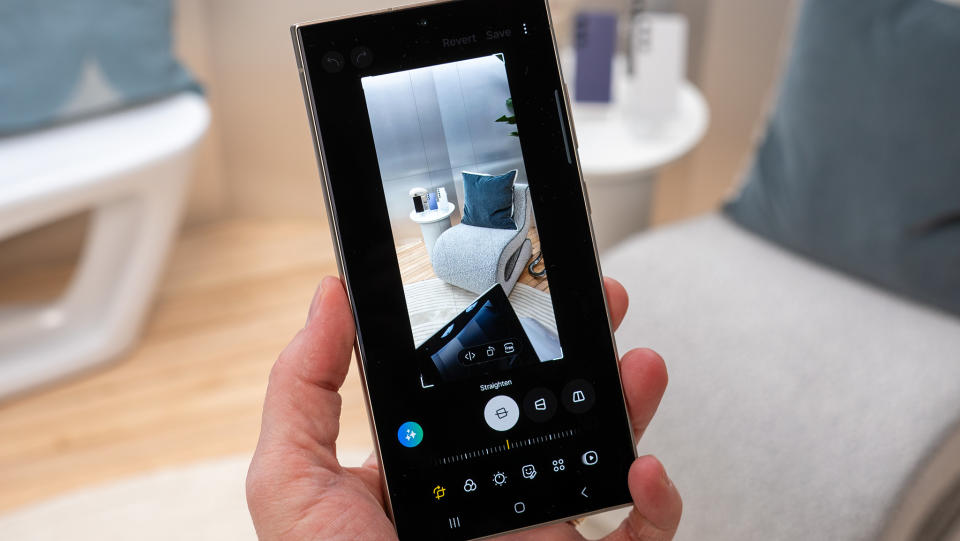
But the biggest upgrade could be on the camera side where Samsung is introducing the ProVisual Engine. This back-end AI tool suite powers the photo and video-taking experience. Paramount to this is a new feature on the Galaxy S24 Ultra that uses the ultrawide camera to help reduce motion blur.
Google has been using this trick for years which is one of the biggest reasons we've called Pixel phones the best phones for parents. Considering that Samsung phones have always had trouble capturing kids and pets in motion, this could be a huge win for the company.
Samsung Galaxy S24 Ultra: Hands-on
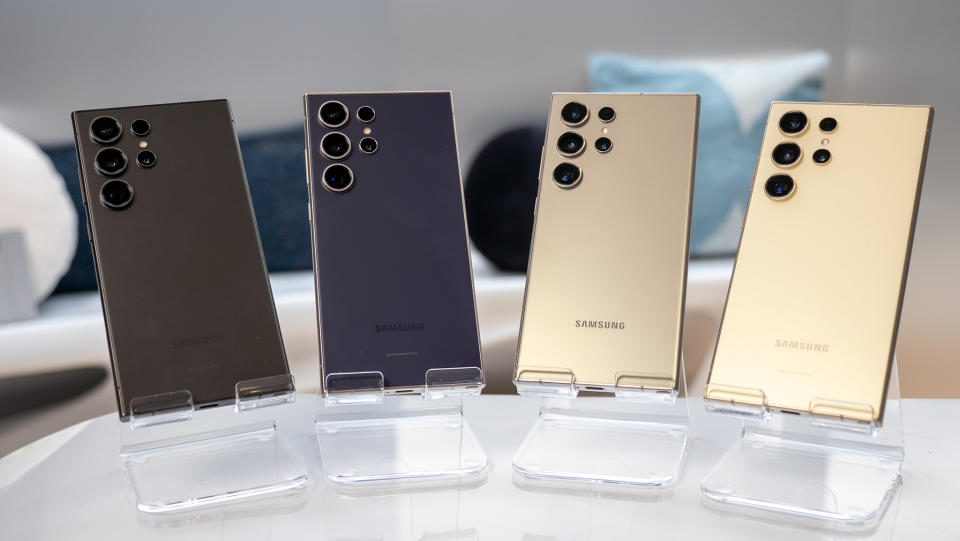
With the Galaxy S24 Ultra, Samsung finally flattened the display. That should make it much easier to find a good Galaxy S24 Ultra screen protector, and it also makes it far easier to write notes with the S Pen all the way to the edge of the panel.
But that doesn't mean the S24 Ultra's face is completely flat in the same way the S24 or S24 Plus designs are. There's still a slight curve to the bezels on the left and right edges of the glass, even though there's no display under this portion.
It's very subtle and rather difficult to capture in pictures, but comparing it to the curve on the S23 Ultra helps illustrate the difference between this year's and last year's model best. For reference, the Galaxy S23 Ultra is on the right in the comparison photos.
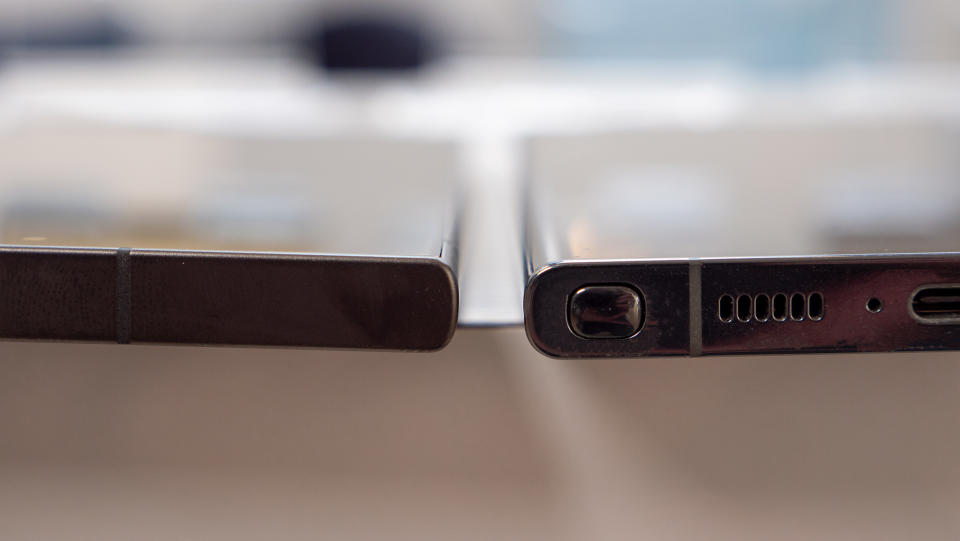
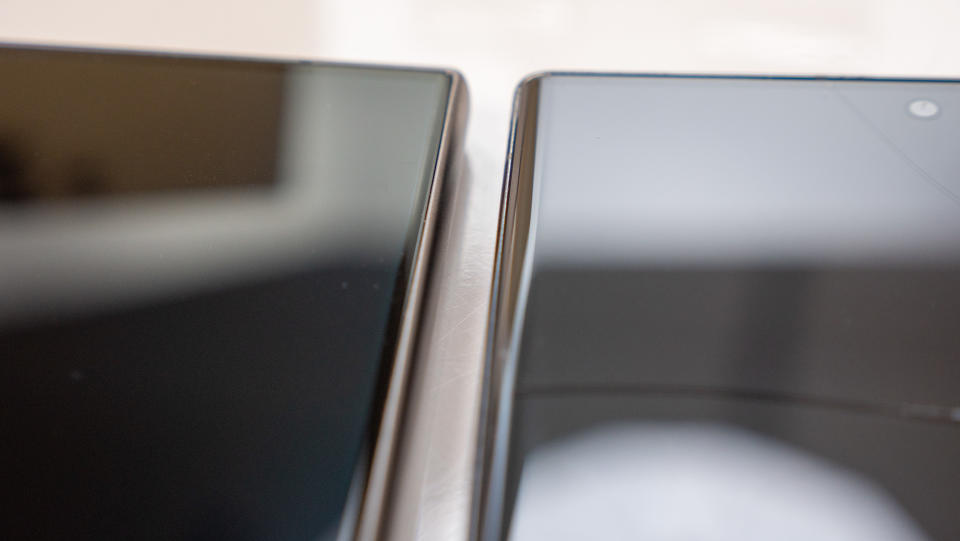
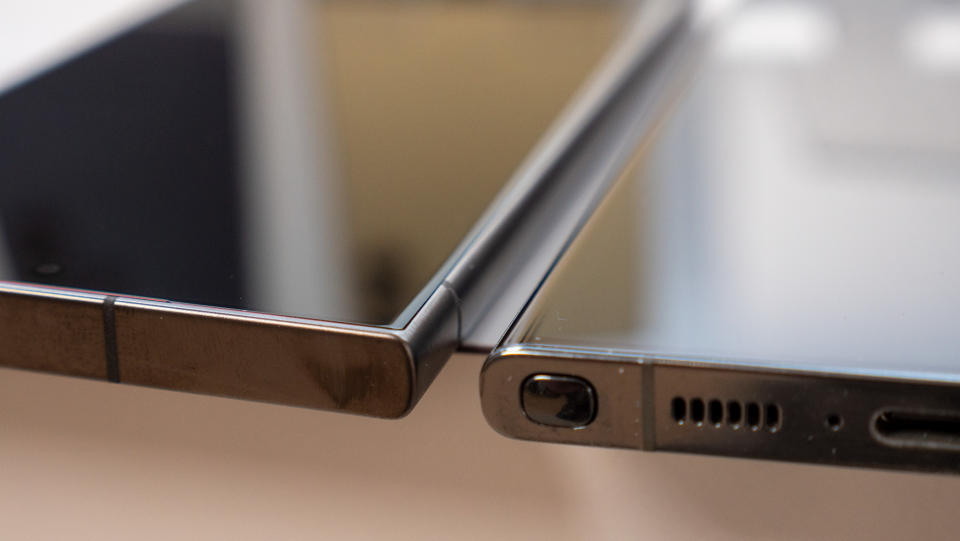
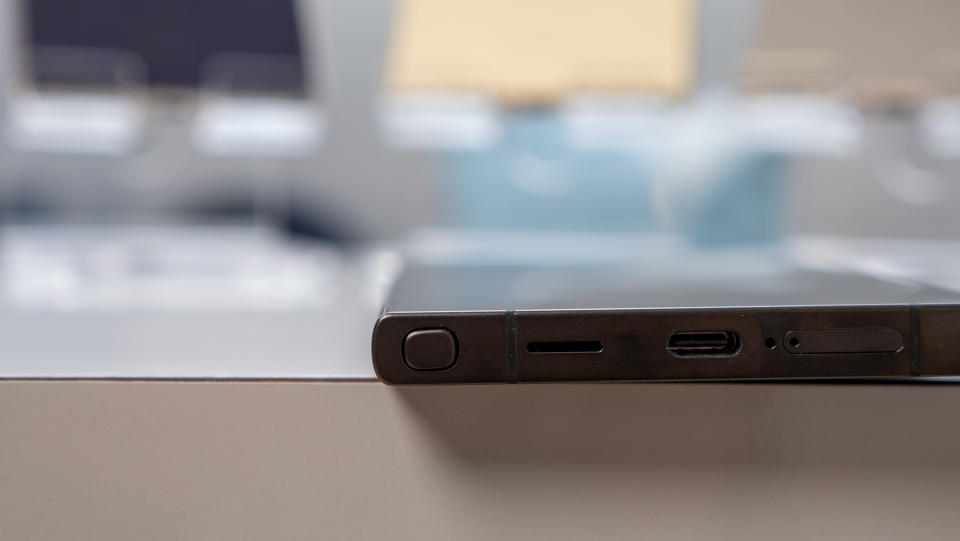
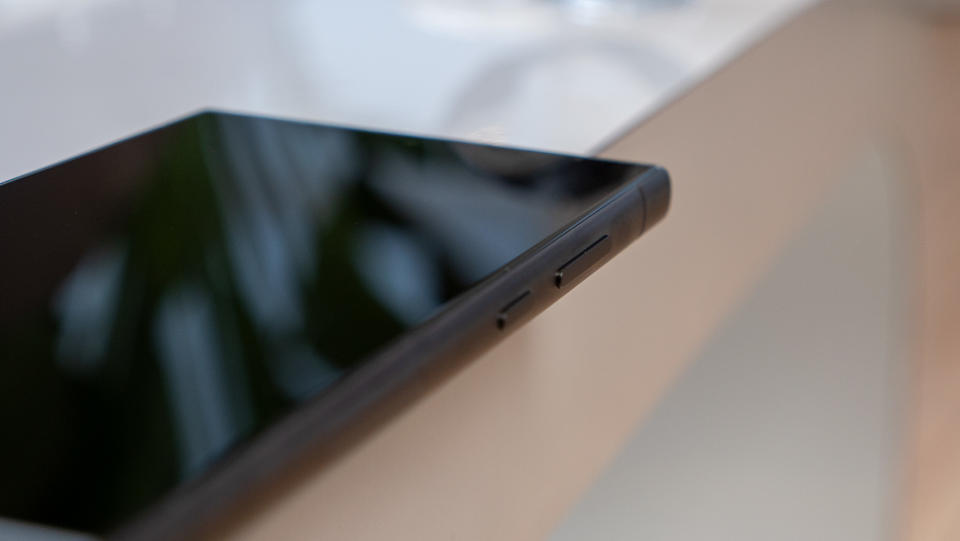
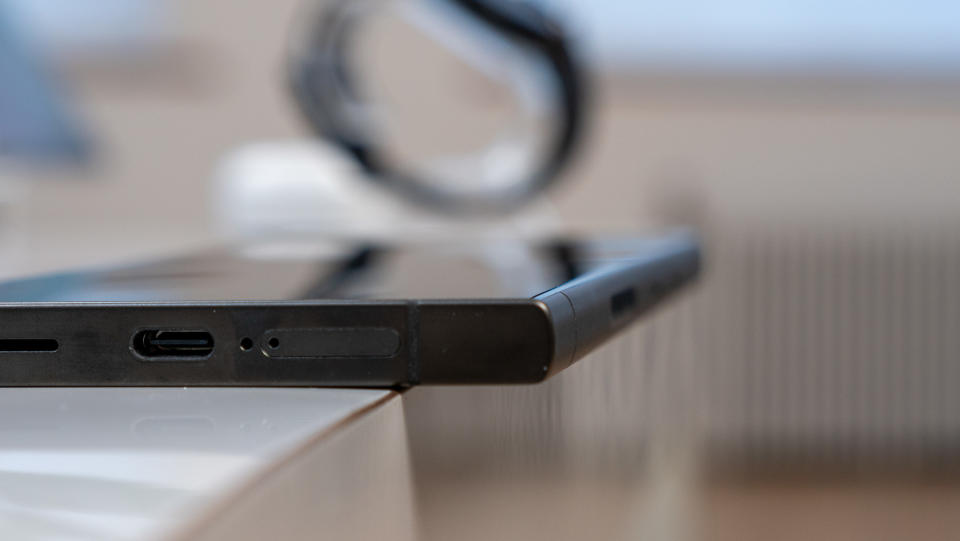
That means cases are a mixed bag, as some provide full edge protection while others still leave space for the curved glass. The official Samsung cases and CaseBorne's clear case both provide full, squared-off edge protection, while Pitaka's aramid fiber thin case has that typical cutout for the curved glass.
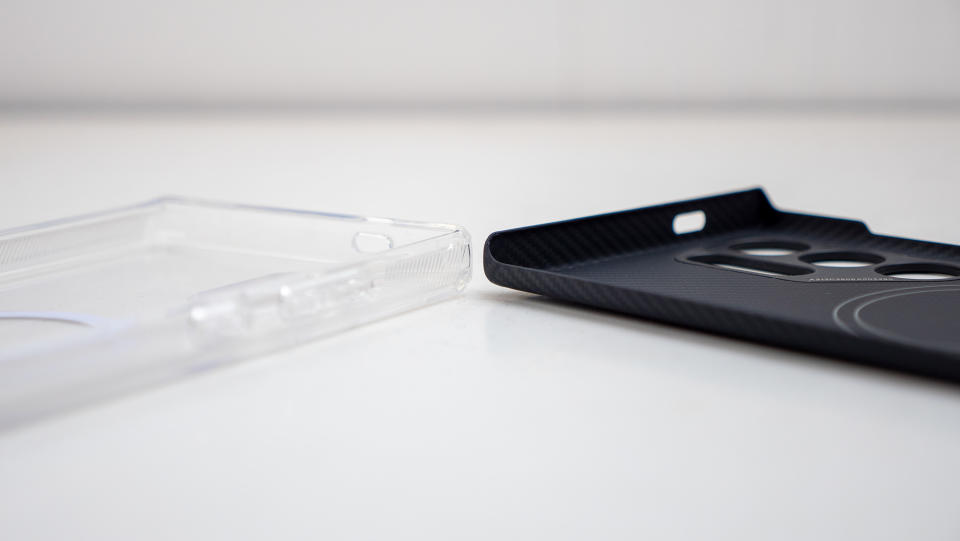
Still, I'm glad the display portion is completely flat this time around. The glass itself has also been upgraded and is now using next-generation Corning Gorilla Armor, which Samsung says is the "most scratch and impact-resistant glass we've ever used on a Galaxy smartphone."
More specifically, Samsung says it's 50% stronger against both scratches and impacts than the Gorilla Glass Victus on the S23 Ultra. It's also made of 25% recycled material, which is a great thing to see.
As a bonus, it also features a 75% glare reduction. Phones like the TCL NXTPAPER 3.0 series feature matte screens that are supposed to reduce eye fatigue, so it's good to see Samsung making some strides for eye health.
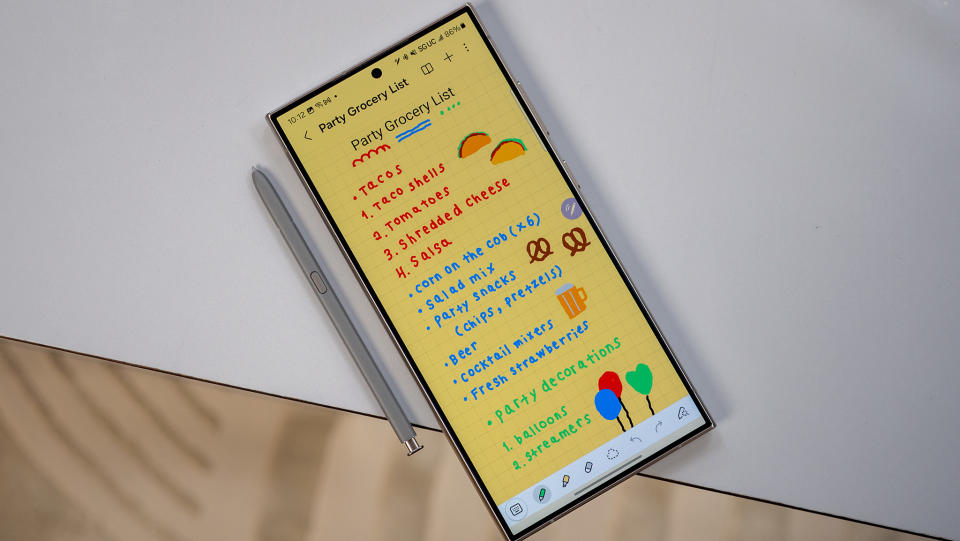
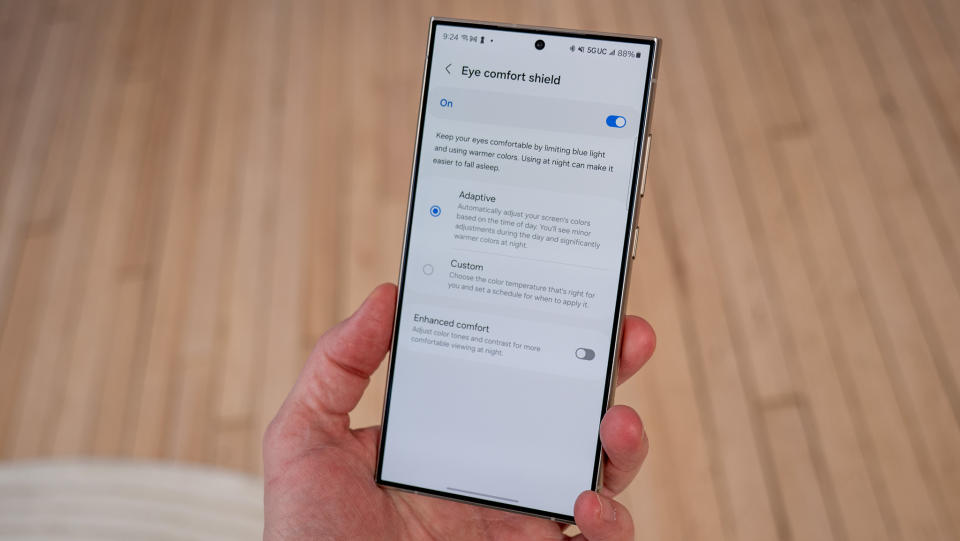
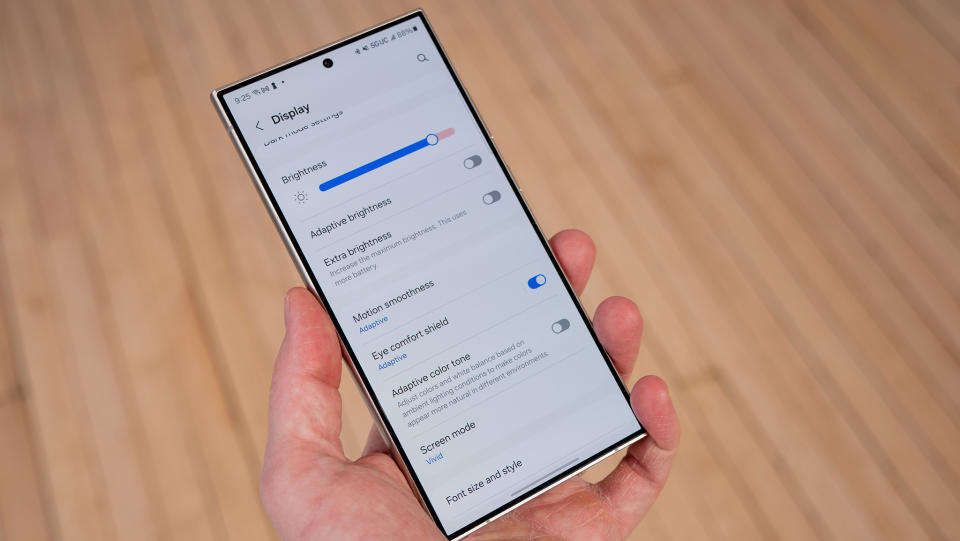
The Galaxy S24 Ultra packs in Samsung's brightest AMOLED display ever, capable of reaching 2,600 nits of brightness. While that's a 40% increase in peak brightness over the Galaxy S23 Ultra, it pales in comparison to the OnePlus 12, which is capable of reaching 4,500 nits when needed.
Samsung has added additional eye comfort settings, as seen in the images above, but still doesn't offer any flicker reduction settings for its phones. Samsung refused to comment on specifics, but it's likely the S24 series is still using the same awful low 240Hz PWM refresh rates as previous Galaxy phones, which are known to cause eye strain and headaches in individuals sensitive to flashing lights.
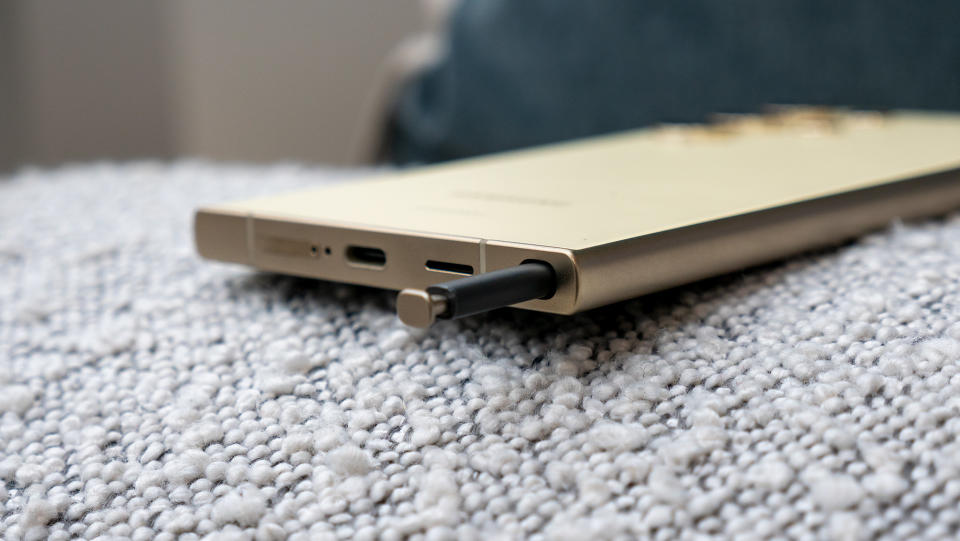
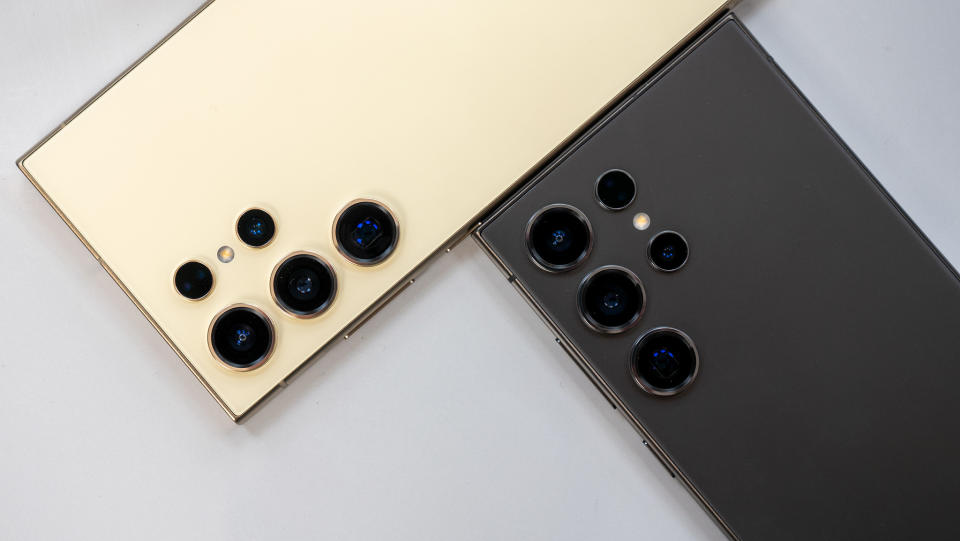
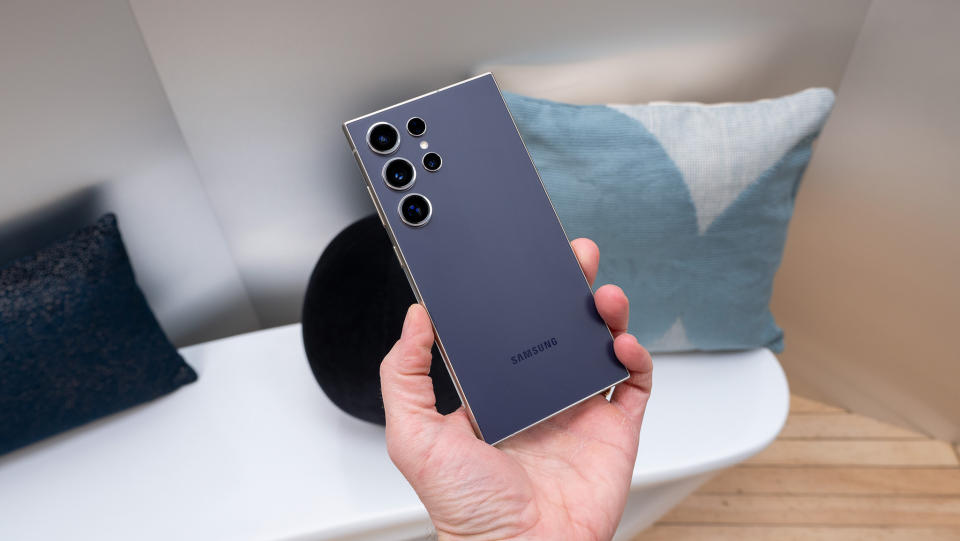
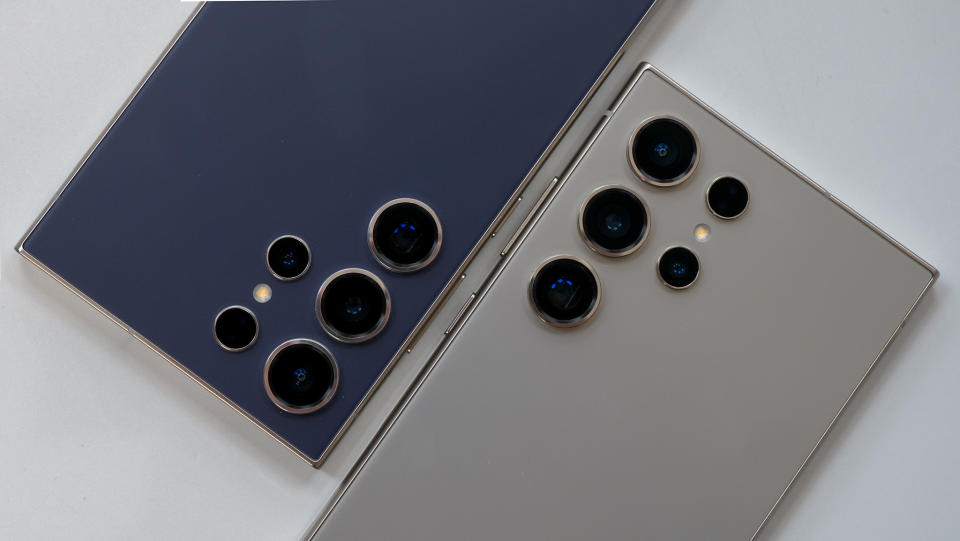
Samsung has also upgraded the Galaxy S24 Ultra's frame from Armor Aluminum to Titanium, following in the footsteps of Apple with its titanium frame iPhone 15 Pro series. Each colorway has its own frame color, and some — like the yellow and purple — offer some truly lovely contrast. Even the S Pen features dual colors that match the phone, rounding out the gorgeous color design.
As we saw back in 2017 when the Essential Phone pioneered titanium phone frames, titanium is a more resilient material than aluminum. It gives slightly when pressure is applied, but bounces right back into shape without permanent structural damage.
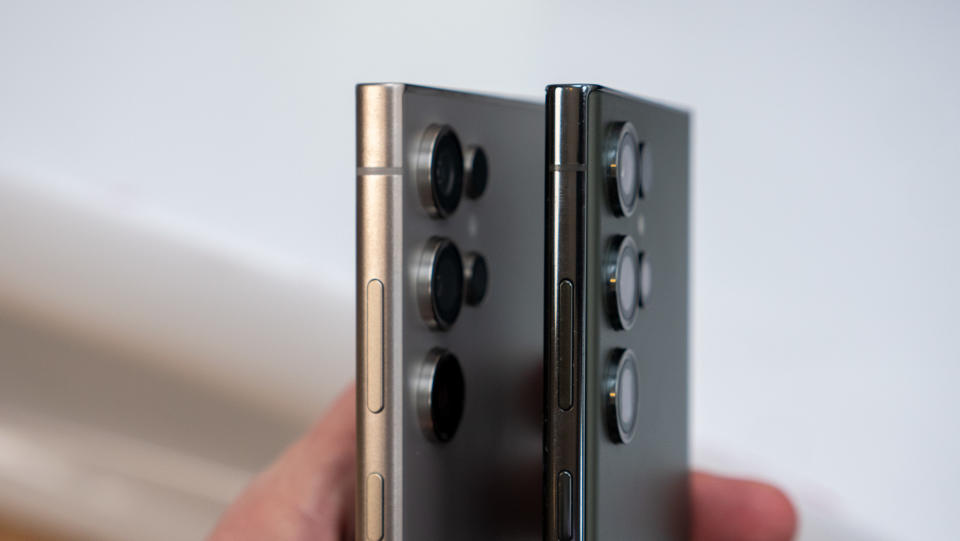
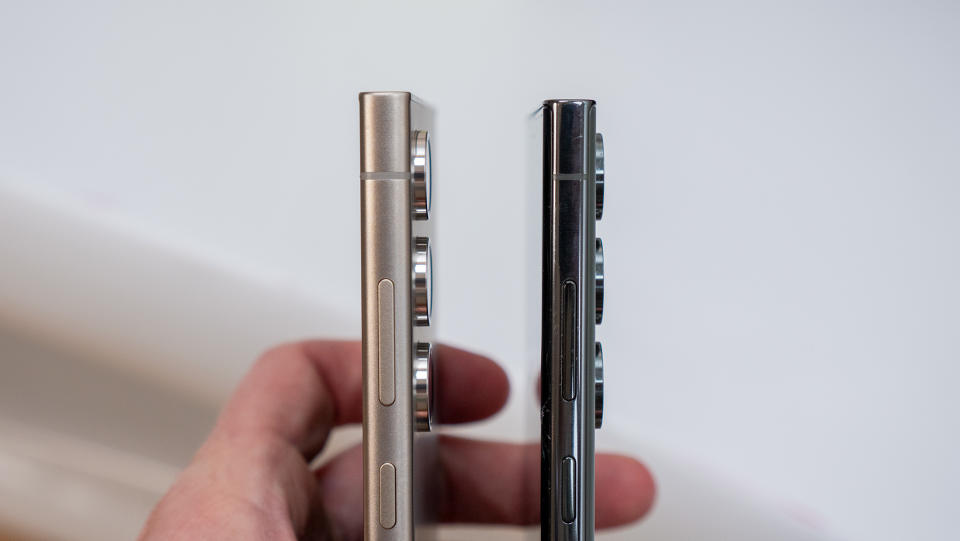
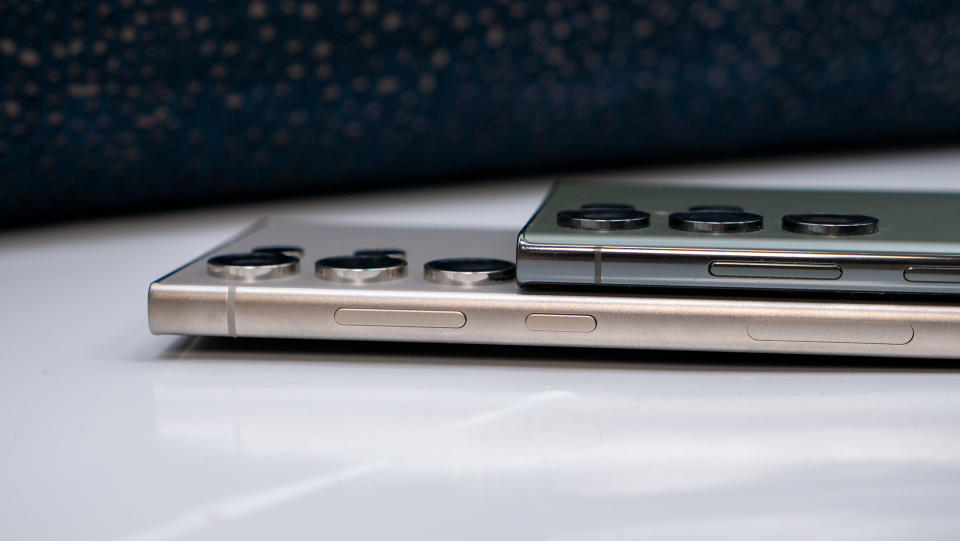
Titanium also looks and feels more elegant than aluminum. It's not shiny at all — which I prefer — and has a nice sparkle to the alloy that polished aluminum lacks. The downside is that it's slightly more slippery than shiny aluminum as it doesn't hold onto hand moisture the same way.
Beyond the frame, there's also a slight increase in camera lens sizes on the back, making the S24 Ultra's camera lenses slightly thicker than the S23 Ultra's.
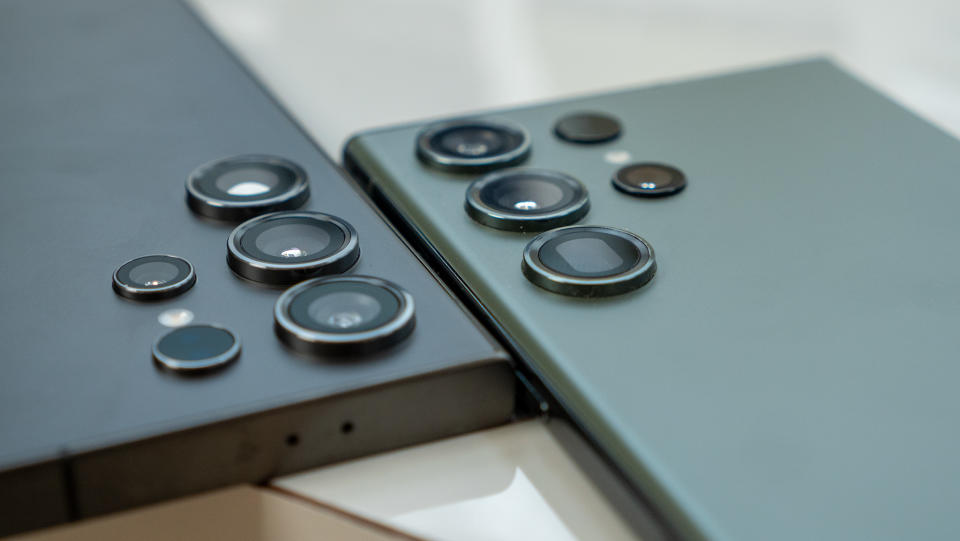
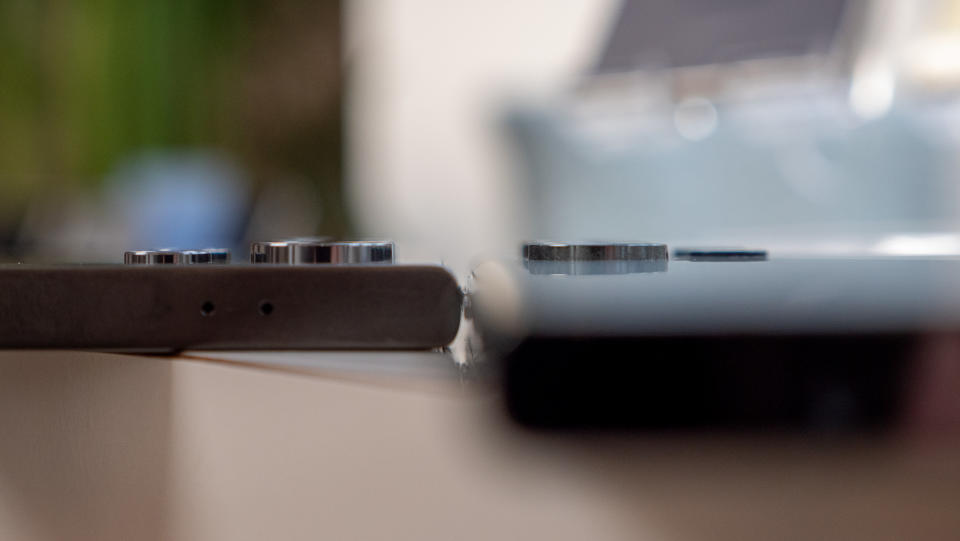
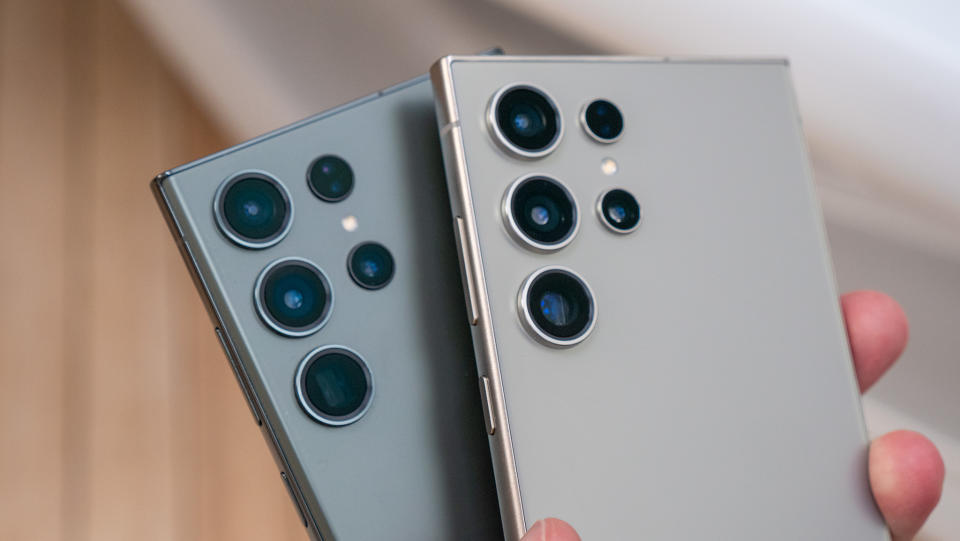
My only complaint with the design is that Samsung retained the squared corners on the Galaxy S24 Ultra. This is, of course, purely a preference, but I've never liked phones with square corners. That's especially true for very large phones like the S24 Ultra, which feel uncomfortable to hold with one hand.
War Thunder Mobile and Arena Breakout are two games that support the new ray tracing features of the Galaxy S24 series.
The Galaxy S24 Ultra features a Qualcomm Snapdragon 8 Gen 3 for Galaxy inside complete with ray tracing support. Samsung says that War Thunder Mobile and Arena Breakout are two games that support the new ray tracing features of the Galaxy S24 series.
Samsung is also "currently continuing to work on partnerships with game developers to deliver highest-quality gaming on S24." We were shown a brief clip of a Ratchet & Clank game running on a Galaxy S24 during the press briefing but Samsung hasn't been willing to comment on that particular game beyond the initial demo.
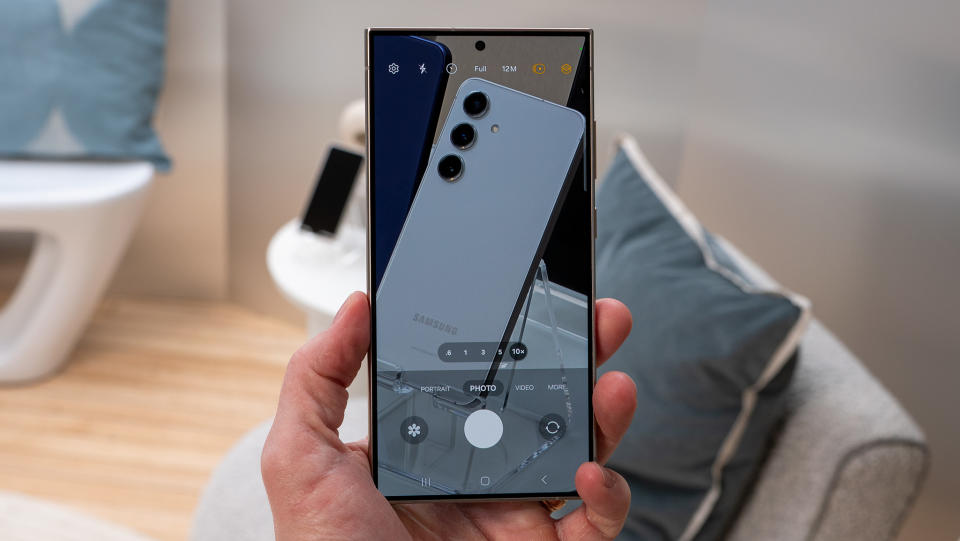
Among the many positive changes Samsung made this year, the only ones likely to be controversial are the changes to the rear camera array. The 10x optical zoom camera is gone, replaced with a 5x optical zoom camera, instead. While that sounds like a downgrade, Samsung actually upgraded the sensor from 10MP to 50MP to help make up for the difference.
That upgraded sensor size is 60% larger than the 10MP sensor it replaced and comes with larger pixels. Even the lens it's behind has a lower f-stop rating, which all adds up to what should be substantially better nighttime performance.
Samsung swapped out the 10MP 10x zoom camera for a 50MP 5x zoom camera on the Ultra.
Samsung said this change reflects the needs of users who most often zoomed in the range of 5x-10x. The Galaxy S23 Ultra's telephoto cameras consistently performed worse than the Pixel 8 Pro at these zoom levels but consistently better beyond 10x, so we'll need some time to test the cameras before making any judgments.
The remainder of the cameras are the same as last year, with a 200MP main camera sensor, a secondary 10MP telephoto camera behind a 3x optical zoom lens, and a 12MP ultrawide camera. A single 12MP camera sits up front.
Galaxy S24 and S24 Plus: Hands-on
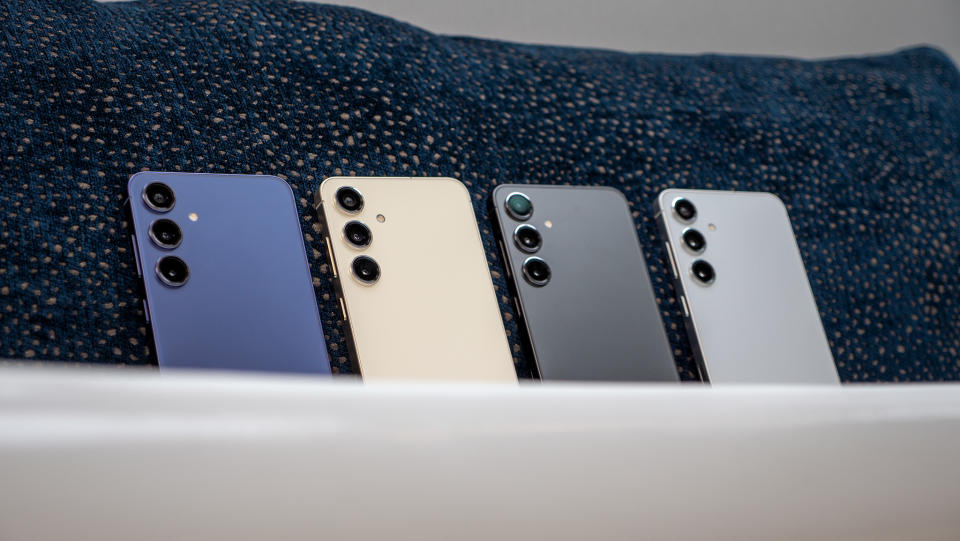
While the Ultra saw most of the hardware changes this year, the smaller Galaxy S24 and its Plus-sized sibling still saw some nice refinements. The overall design language remains the same that we saw on the Galaxy S23, complete with a flat front and back, plus three protruding camera lenses on the back.
While the front and back are flat, Samsung rounded off the edges of the Armor Aluminum frames enough to make the phone feel more like one single slab rather than a metal frame that's separate from the glass.
All colorways have frame colors that perfectly match the back color, helping to further lend to the idea that this is a unibody design. It looks and feels nicer than last year, and I really like the colors Samsung is using this time around.
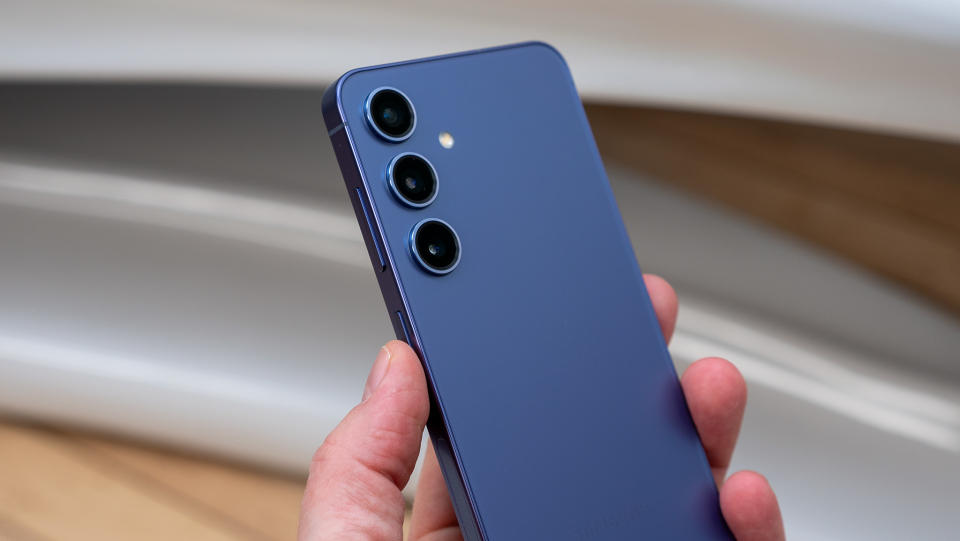
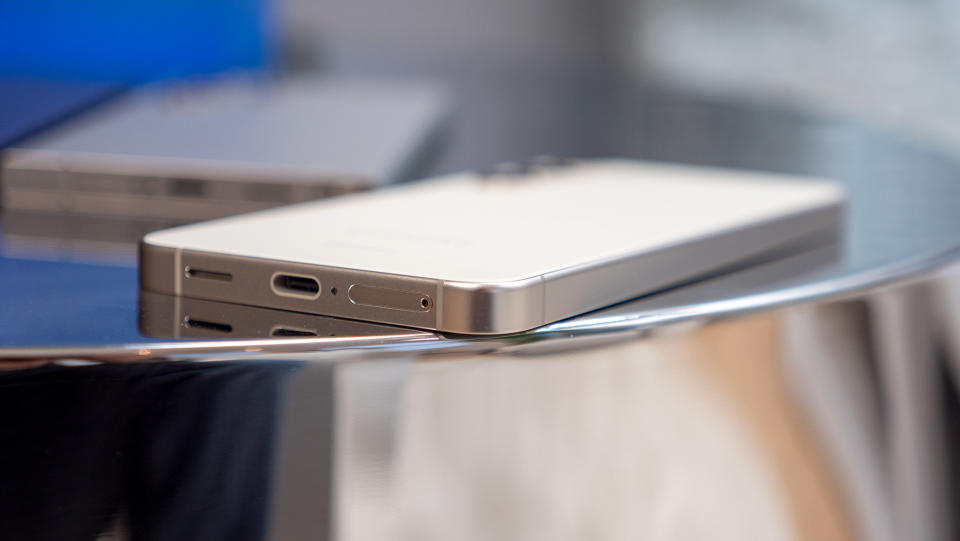
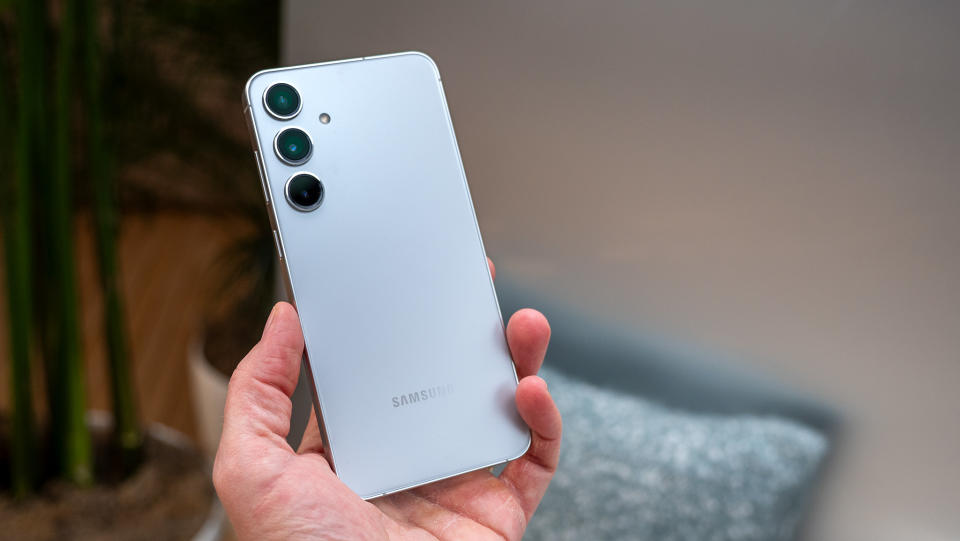
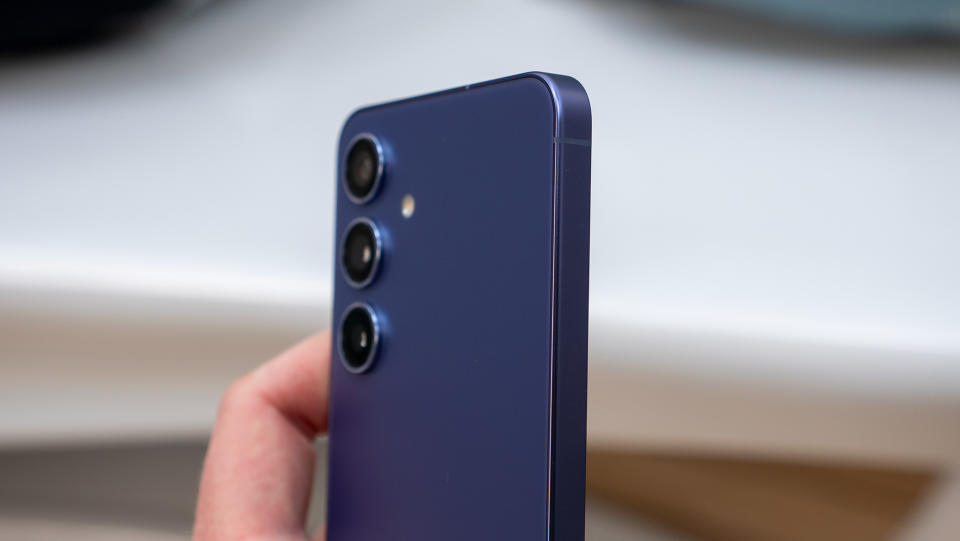
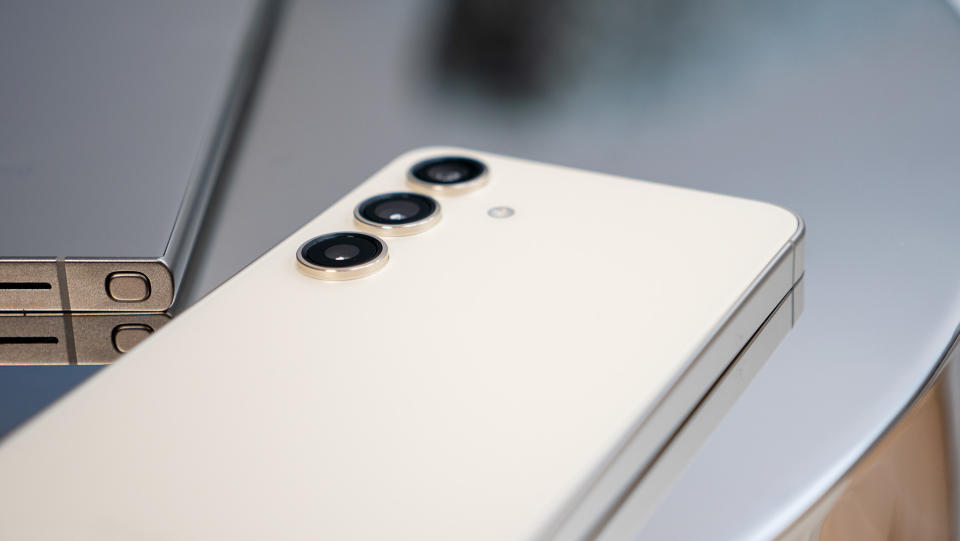
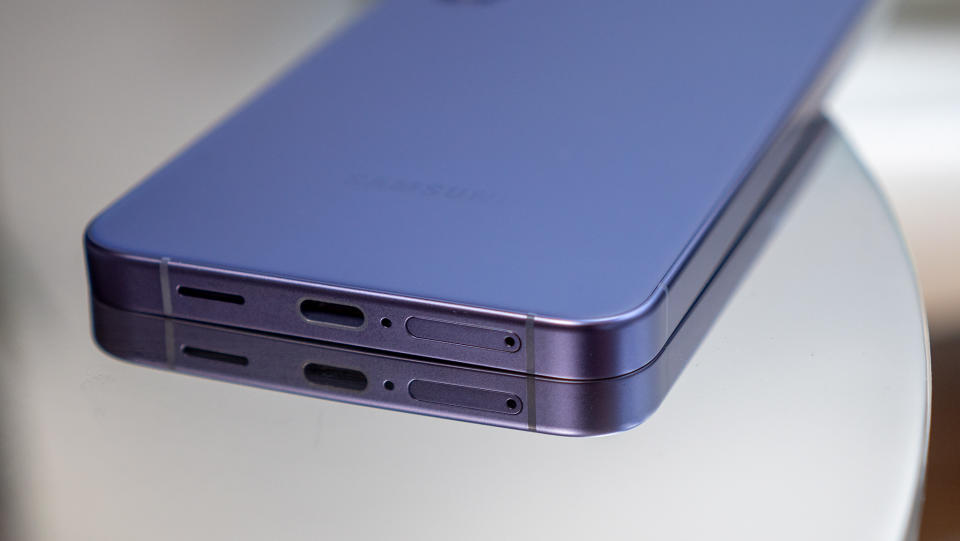
The smaller Galaxy S24 saw a 100mAh battery increase to a total of 4,000mAh, while the Galaxy S24 Plus got another 200mAh increase to a total of 4,900mAh. Surprisingly, this didn't make either phone thicker, even though Samsung reduced the size of the camera lens bumps around the back.
Both models look and feel nicer in hand than last year's options, and the S24 Plus even shrunk a bit despite gaining a larger screen when compared to the S23 Plus.
In fact, the Galaxy S24 Plus is a noticeably smaller phone than last year's model, coming in at 0.19 inches shorter, 0.07 inches narrower, and 0.05 inches thinner than the Galaxy S23 Plus. This is despite seeing a minor screen size bump and increased battery size. It's some pretty impressive engineering, no doubt.
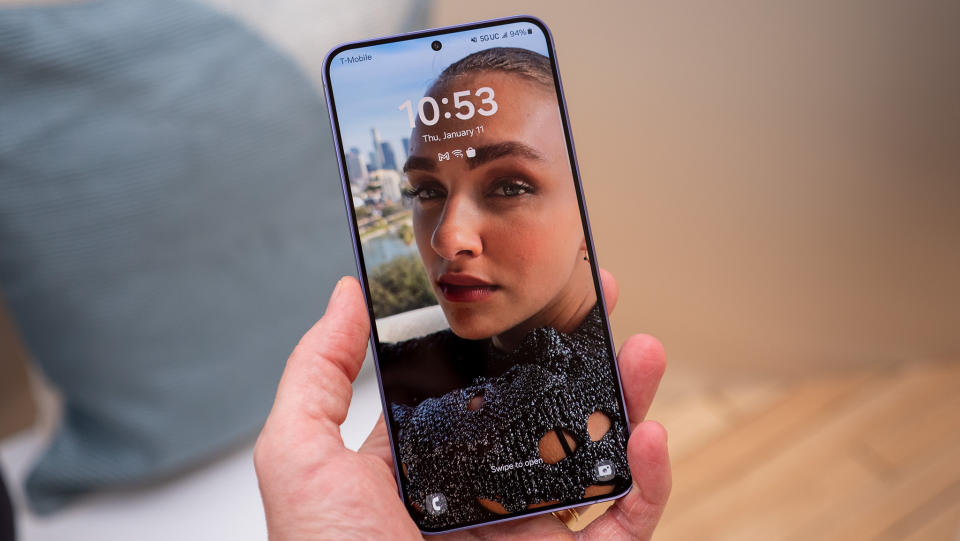
This year, Samsung isn't just giving the Ultra model a display upgrade. Both the Galaxy S24 and Galaxy S24 Plus feature brand-new AMOLED panels with LTPO 120Hz refresh rates that can dynamically scale from 1Hz to 120Hz.
Even the outdoor visibility is better than last year thanks to a maximum brightness level of 2,600 nits on both phones, matching the Galaxy S24 Ultra as Samsung's brightest AMOLED panels ever.
Beyond that, the North American Galaxy S24 and S24 Plus come equipped with a Qualcomm Snapdragon 8 Gen 3 for Galaxy processor inside that's capable of ray tracing and even includes a better cooling engine than prior years. Plus, it's 5% more battery efficient and should last a long time thanks to the seven-year software update commitment.
Wrap up
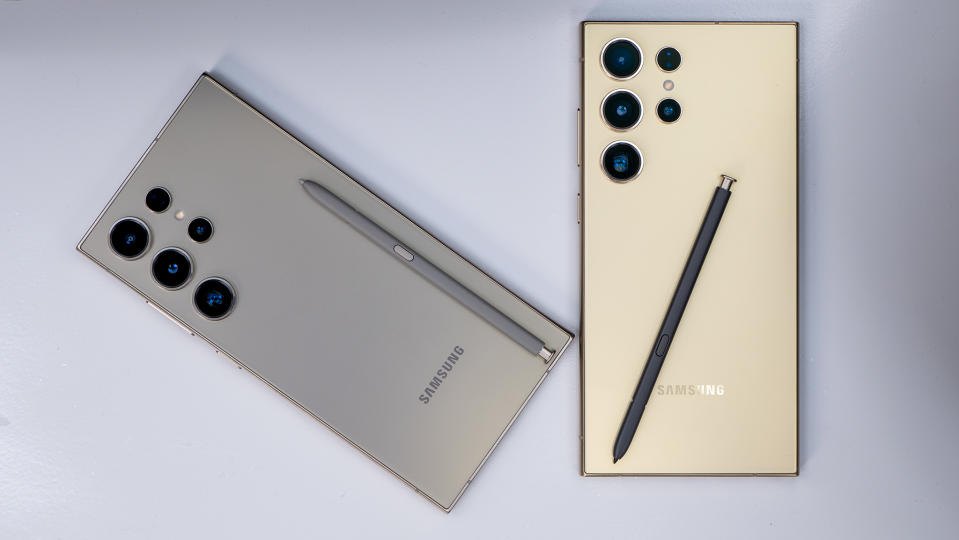
Samsung is delivering yet another generation of excellent phones. While it might not make sense for Galaxy S23 users to upgrade, all three models on offer here provide fantastic upgrades for anyone using an older Galaxy phone or switching to Samsung from a different company altogether.
These are the sleekest, fastest, and brightest phones Samsung has ever made, but they're also not without their concessions. Anyone upgrading from a recent Galaxy S or S Plus model probably won't be too impressed with the cameras on the non-Ultra models since they haven't changed much in years, and the verdict is still out on whether or not Space Zoom will perform as well on the Ultra as it has on previous Ultra models.
But at least Samsung has made big strides elsewhere, especially with the AI features that'll make a huge difference in your day when you need them. Note-takers and folks who use translation features will be especially pleased but, even if you're not in those categories, many of the generative AI functions are fantastic and work as advertised.
In a nutshell, Samsung is adding a bit of Pixel magic to its Galaxy S line this year, and they're all the better for it.
